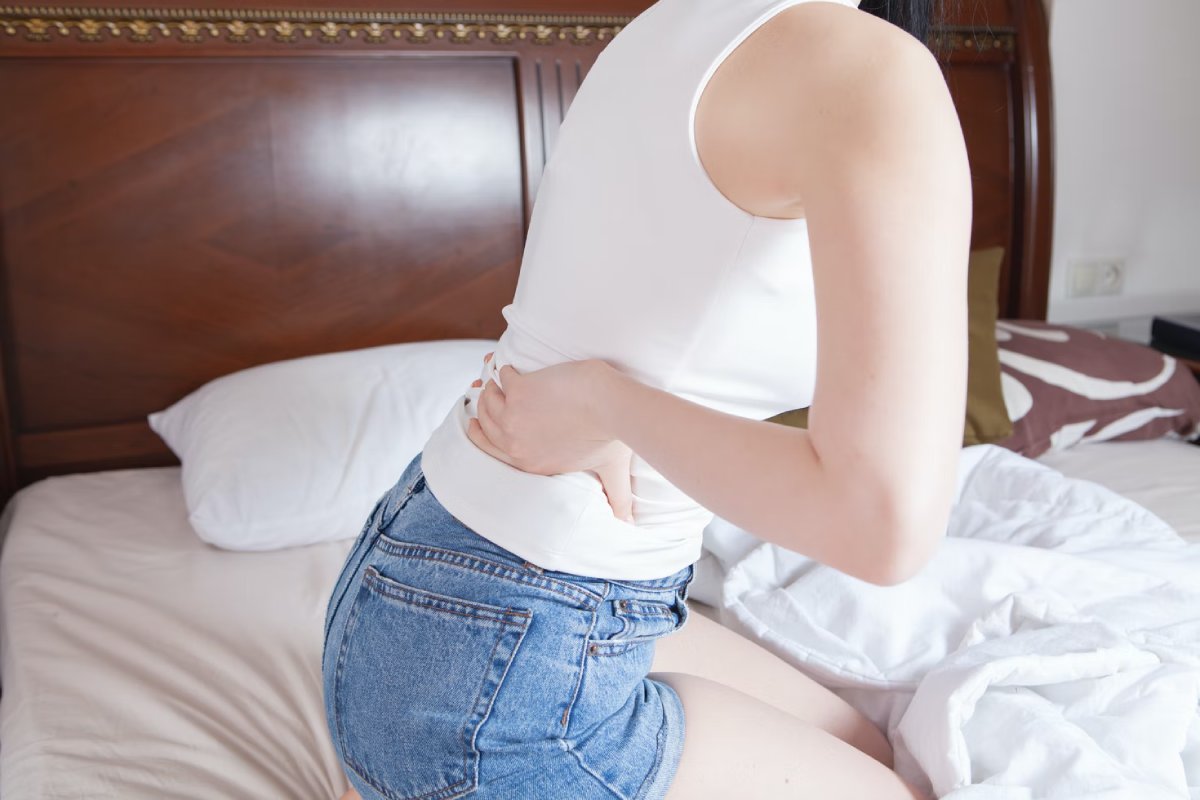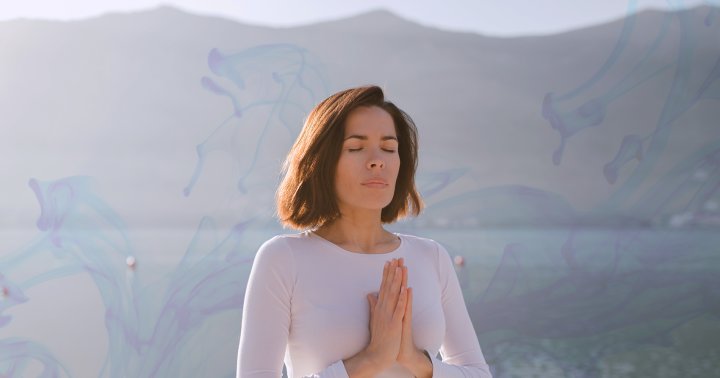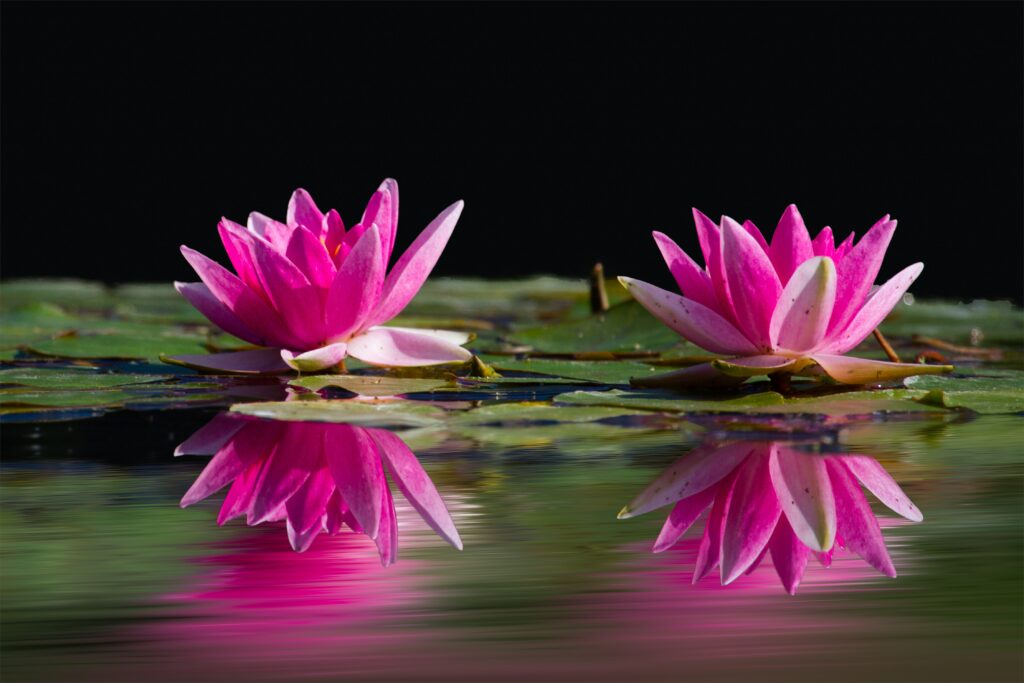A Beauty Editor's Guide To Dark Spots — Everything You'll Ever Need To Know
Dark spots are a skin concern that are near universal. Folks of all ages, skin tones, and types can experience them. Here, exactly how to deal.
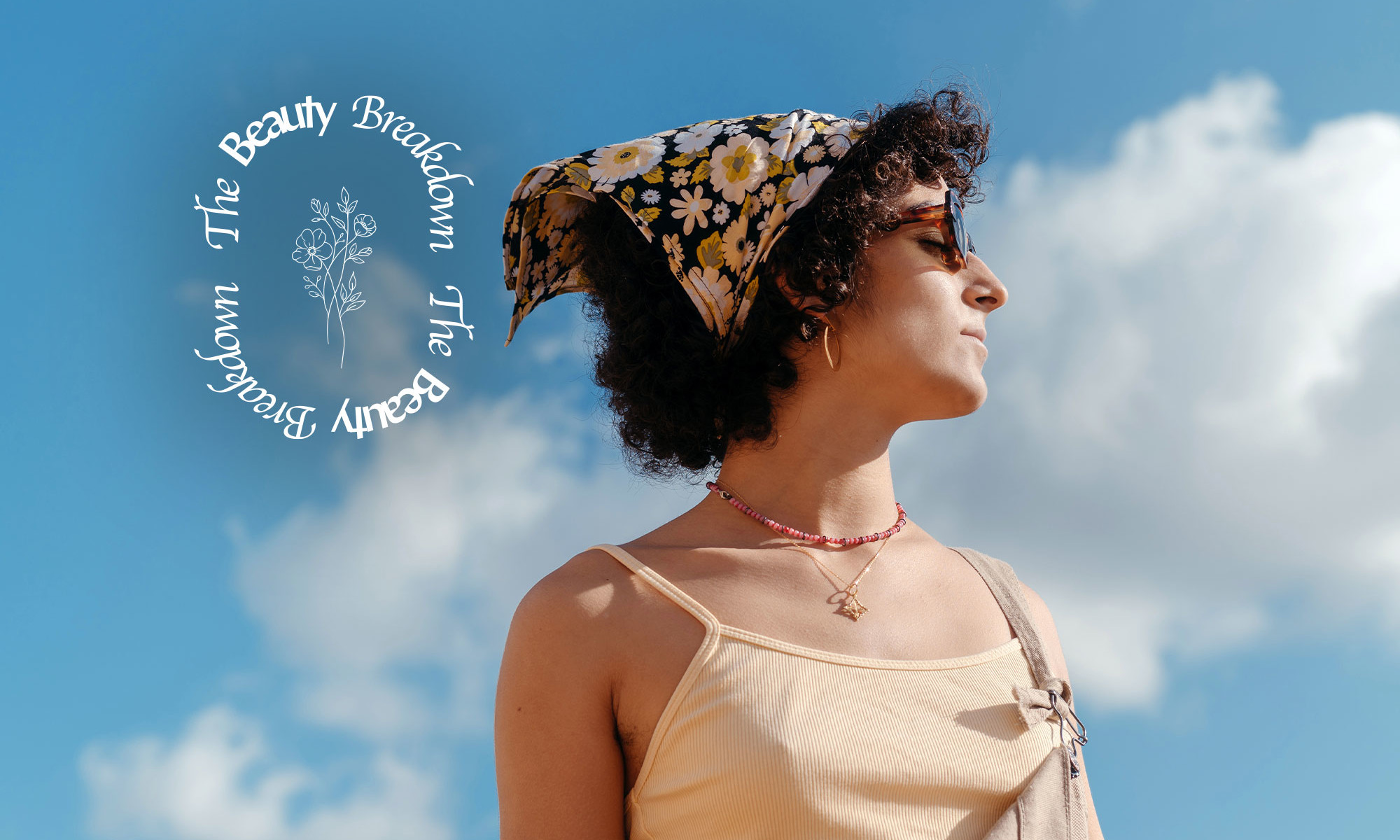

mbg Beauty Director
mbg Beauty Director
Alexandra Engler is the beauty director at mindbodygreen and host of the beauty podcast Clean Beauty School. Previously, she's held beauty roles at Harper's Bazaar, Marie Claire, SELF, and Cosmopolitan; her byline has appeared in Esquire, Sports Illustrated, and Allure.com.
Image by Lucas Ottone / stocksy April 17, 2023 Our editors have independently chosen the products listed on this page. If you purchase something mentioned in this article, we may Welcome to the Beauty Breakdown, our series that dives into today's buzziest beauty topics. In each, we focus on a different theme and highlight all the need-to-know basics, common mistakes, and the best products to get your hands on. Dark spots are a skin concern that are near universal—they can affect folks of all skin types and tones, show up when you’re young and old, appear on any area of the body, and are triggered by a wide variety of factors and environmental influences. Treating them takes a dash more nuance than one might expect. So many folks think you can just exfoliate them away—and while it’s certainly an important step in the process, it’s not the only thing to consider. (Not to mention that if you overdo it, you run the risk of triggering more inflammation in the skin—potentially making the situation worse.) So in an effort to shed some light on dark spots, we present to you everything you need to know about this common skin concern. Read on for our best and brightest advice. Image by mbg Creative / mbg creative

The 101 on dark spots
Put simply, dark spots are areas of skin that appear darker than the rest of the complexion. "Dark spots are often the result of a grouping of cells within the skin that overproduce the pigment melanin, or the result of melanin being deposited in the surrounding epidermis and dermis," board-certified dermatologist and YouTube creator Andrea Suarez, M.D., FAAD, tells mindbodygreen about dark spots.
In our skin there are things called melanocytes, which are the cells responsible for producing pigment in the skin. When our skin is inflamed—be that from UV radiation, acne, hormones, or something else—it stimulates these melanocytes1 to create more pigment. The result? Spots or patches in the epidermis that are a darker hue than the rest of the complexion
They often appear on areas of the skin that are exposed to sunlight (such as the chest, back of hands, and cheeks), but can also appear anywhere on the face or body that has experienced inflammation or trauma, such as acne.
And while these are most often traced back to UV exposure, it’s not the only thing that contributes to it. In fact, there are several types of dark spots.
Types of pigmentation issues:
While their appearances tend to look very similar, here are the differences between the various types of pigmentation issues of the skin.

Image by mbg Creative / mbg creative
The 5 things were getting wrong right now
Like when treating most beauty concerns, tending to age spots usually starts off with the best of intentions. However, as a beauty industry we’ve been making a few mistakes along the way.
The 5 steps you need to know
Here, exactly how to treat dark spots — or avoid them altogether.
1.
Build out your sun care arsenal
Practicing smart sun takes a well-rounded, nuanced approach. To start, it means you should be mindful of the time you do spend in the sun. Applying SPF is not an excuse to sunbathe for sport. While we believe spending time outdoors is important for your overall health, treating a tanning session like you're training for a marathon isn’t the move. Use your outdoor time wisely: Avoid too much time during peak UV hours and use accessories like hats, sunglasses, and UFP shirts.
OK, now onto sunscreen. "The best sunscreen is the sunscreen that you'll actually wear," says holistic esthetician Lesley Thornton, founder of KLUR. "I don't argue with people about sunscreen types. Do you wear it? Great." We like these mineral options, but ultimately it’s just about finding products you enjoy.
I also recommend creating a sunscreen wardrobe, so you have products for many types of occasions: Water-resistant full body options for the beach, stick formulas for on the go, facial powders for reapplication, and several facial lotions depending on what you’re up-to that day (i.e. one for under makeup and one for bare face.) While this advice may have seemed silly a decade ago, now-a-days there are so many amazing and varied sunscreen options on the market to suit any need.
It also means caring for the skin apres sun as well: If you’ve just spent a day at the beach, be sure to hydrate and soothe skin, to minimize any potential inflammation in the skin. In this use case, aloe vera is a popular ingredient for a reason: This comes down to one of the compounds in the juice, aloesin.
Aloesin has brightening capabilities that can help speed up this fading process. In one study, when aloe was applied to skin four times per day for two weeks, aloesin was shown to effectively fade post-acne hyperpigmentation4. Another report showed that topical application of aloesin can directly inhibit hyperpigmented skin from producing more melanin.
2.
Visit a professional who works with skin tones like yours
We are big believers in finding your skin care person—a professional (like an esthetician, dermatologist or aesthetic nurse practitioner) who can help you care for skin.
With dark spots in particular, this is important as not all advice can be universally applied. For example, broadband light (BBL) lasers are never appropriate for darker skin tones. In addition, other types of lasers need to be set to lower settings when working on skin of color so as not to trigger more dark spots—thus it’s very important to go to a pro who knows exactly how to treat your skin tone.
Or on the ingredient front, hydroquinone (a commonly prescribed “skin lightener”) can actually have the reverse effect on the skin: “"Hydroquinone in some people with darker skin carries a rare risk of a paradoxical darkening of the skin,” says board-certified dermatologist Jeremy Fenton, M.D., of Schweiger Dermatology Group in NYC. While this is rare, lots of folks chose to avoid it to be extra cautious. On the product front, look for brands who note that they test on a wide variety of skin tones—especially with strong chemical exfoliators. For example, the Ourself peel we mention below.
Ultimately: “You need to make sure you're getting treated for your skin tone. If you go into the waiting room, and there's no one that looks like you—ask the doctor a million questions,” says board-certified dermatologist Jeanine Downie, M.D. once told me about finding a dermatologist on my podcast Clean Beauty School.
Exfoliation is an extremely useful tool in fading dark spots. It is the process by which you remove the outer layer of dead skin cells (also called the stratum corneum) from the epidermis. In doing so, you remove some of the tinted skin cells that are creating the appearance of dark spots. This can be done manually (like with physical exfoliators such as scrubs) or chemically (like with AHAs and BHAs).
But just because it’s useful, doesn’t mean it can’t have adverse consequences when overdone. Over exfoliation strips the skin of its protective barrier, and ultimately triggers inflammation in the skin—the thing contributing to dark spots in the first place.
While everyone’s exfoliatin tolerance is different, a general guideline is one to three times a week. Another important factor to consider is the strength of the exfoliator. A good guideline for folks here:
And while retinol isn’t technically an exfoliator, it does speed up skin cell turnover which will have similar effects. Because of this, it can certainly help fade dark spots quicker. It can be challenging to tolerate for some, but this list of serums contains a wide variety of concentrations and retinol types so you’re more likely to find one that suits your skin.
4.
Use smart face care formulas
Exfoliators aren’t the only tools to utilize in your search for a brighter, even complexion. There are plenty of skin brightening ingredients that help tend to dark spots in a variety of ways (check out the list below). Look for formulas that have anti-inflammatory effects (like from antioxidants), bolster the skin barrier and its natural protection mechanisms, and inhibit excessive melanin production.
Yes, you can treat dark spots internally. While this won’t fade dark spots that are currently present on the surface, it will limit forming new ones as well as improving overall appearance and tone. Consume antioxidants and nutrients that can help skin deal with photodamage, such as astaxanthin, pomegranate extract, and vitamin C.
Pomegranate has been shown in clinical studies to have the ability to enhance photoprotection11 in the skin, meaning your skin cells are better equipped to deal with UV rays and their subsequent effects. For example, one randomized controlled trial found that the pomegranate extract increased skin's resilience12 against UVB rays, as well as changes to the skin microbiome.
Vitamin C is considered a do-it-all ingredient for the skin, and it holds that same reputation when taken internally. Studies have shown that it can manage oxidative stress in cells thanks to its antioxidant properties—this not only supports skin cell health but can help support skin from previous UV damage13. Astaxanthin is another powerful antioxidant. One study found astaxanthin improved skin wrinkles, age spot size, and skin texture14.
For our selects of the best beauty supplements that can help with dark spots, check out this list.

Image by mbg Creative / mbg creative
The 3 extra tips
While the above routine is great for day-to-day, you can involve these additional treatments to better your results.

Image by mbg Creative / mbg creative
The 7 best products to use
Here, the best products for a head-to-toe glow.
Best for body: mindbodygreen body cream

Pros
Ideal for using on dry, maturing, or sensitive skinPairs well with other body products, like mindbodygreen’s dry body oilFormula made in a factory powered by 100% wind energyCons
It’s fragrance free to suit all skin types, but if you prefer scented body products we do not have this in a fragrance at this timeConsiderations: Cruelty freeVeganFragrance freeContains organic ingredients
Ingredient highlights: AloeShea butterMango seed butterSqualaneTucuma oil
This plush, velvety body cream is sensorially delicious, but the real reason it’s a standout is the blend of high-quality naturally-derived ingredients. Organic aloe vera is not only hydrating, but contains several nutrients that can lighten dark spots, like aloesin (In one study, when aloe was applied for two weeks, aloesin was shown to effectively fade hyperpigmentation. Another report showed that topical application of aloesin can directly inhibit hyperpigmented skin from producing more melanin.) Then the buttery blend contains cocoa seed butter, shea butter, and mango seed butter. Mango seed is naturally high in vitamin C, the antioxidant famous for its brightening and collagen-boosting properties. Finally it’s infused with tucuma oil, a botanical that contains beta carotene, which can fade dark spots and smooth fine lines.
Best face cream: Eadem Cloud Cushion Airy Brightening Moisturizer
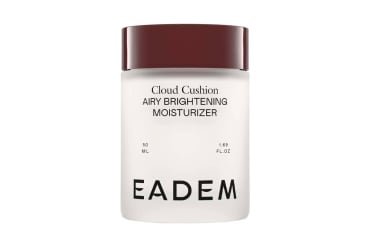
Pros
Brightening ingredients are effective, while being very gentle on the skinSupports the skin barrier as wellCons
The mbg beauty team considers the texture a strength, but it might be too thick for folks who like thin, liquidy face formulasConsiderations: Cruelty freeVeganFragrance free
Ingredient highlights: SqualaneTucuma oilPeptidesSnow mushroomCeramidesNiacinamide
A mindbodygreen beauty team favorite, this cushiony face cream feels exactly like its name suggests. But beyond fabulous texture, the ingredients are specifically formulated to even out skin tone—for skin of any color. It’s called Smart Melanin™ Technology and it ensures each active is used at the just right dosage, so it’s gentle for all skin types and compatible for skin of color. As for said ingredients, there are dark-spot correcting peptides, tucuma extract, snow mushroom, and ceramides.
Advertisement
This ad is displayed using third party content and we do not control its accessibility features.
Best day serum: Versed Brightening Serum
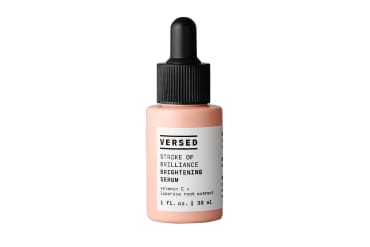
Pros
Bottle made with 50% PCR (post consumer recycled) plasticThe brand is transparent about the percentage of active ingredients in the formula. For example, licorice root extract is at 1.6%Cons
Vitamin C has a distinct smell. It’s inherent to the ingredient, and since this isn’t fragranced you might pick up on it.Considerations: Cruelty freeVeganFragrance free
Ingredient highlights: NiacinamideVitamin CLicorice root extractAlgae extractHyaluronic acid
If you want to get serious about treating dark spots, it’s worth folding in a serum into your routine. Serums are your treatment step, as they are usually formulated with more potent amount of actives and penetrate deeper into the skin. This one is ideal for the day. It uses three powerful brightening ingredients: vitamin C, licorice root, and niacinamide. In addition, there is hyaluronic acid and a red algae extract for hydration.
Best night serum: January Labs Triple Active Reclaiming Serum
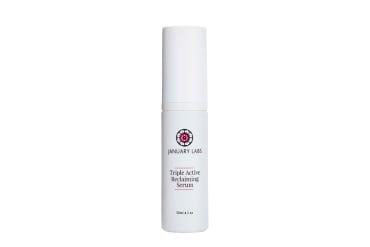
Pros
Retinol can help speed skin cell turnover, which will fade dark spots faster. Bonus: It also boosts collagen production!There are soothing, buffering ingredients such as aloe and plant extractsConsiderations: Cruelty freeVeganFragrance free
Ingredient highlights: AloeNiacinamideVitamin CRetinol
Three powerful ingredients formulated into one superstar serum. This blend contains a patented 0.5% retinol that plays well with other ingredients and isn’t irritating, as well as nicotinamide at the clinical dosage of 2% and two forms of stable vitamin C.
Advertisement
This ad is displayed using third party content and we do not control its accessibility features.
Best oil: Klur Unseasonal Kind Oil
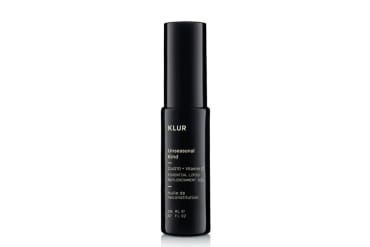
Pros
Uses a stable, oil-soluble form of vitamin C, Tetrahexyldecyl Ascorbate THDContains a host of other antioxidant-rich botanical oils, like jojoba, rosehip, and sea buckthornConsiderations: Cruelty freeVeganFragrance freeContains organic ingredients
Ingredient highlights: SqualaneVitamin CVitamin ECoQ10
From holistic aesthetician Lesley Thornton, Klur is a brand that focuses on only what the skin needs to function optimally. This oil uses squalane, vitamin C, E, and CoQ10 for optimal barrier support—plus, this blend of antioxidants also helps brighten the complexion with use.
Best mask: Ourselves Brightening Peel
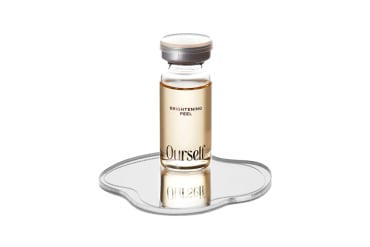
Pros
Incredibly effective Formulated safe for all skin tonesNo downtime with visible results in 7-14 daysCons
Very strong — use with caution and follow the directions to a TPriceyConsiderations: Cruelty freeVeganFragrance free
Ingredient highlights: Vitamin CGlycolic acidTranexamic acidPhytic acid
This at-home face mask rivals those you may find in a spa. It’s made with a whooping 34% glycolic acid, which will exfoliate the skin, fade dark spots, and reveal brighter, firmer skin underneath. Just be sure to follow the brand’s pre and after care instructions so you don’t irritate your skin.
Advertisement
This ad is displayed using third party content and we do not control its accessibility features.
Best for hands: mindbodygreen postbiotic hand cream
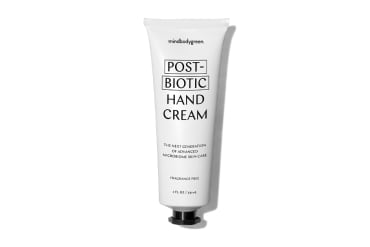
Pros
Non-greasy textureIdeal for sensitive skinPacking is made with 46% PCR plasticFormula made in a factory powered by 100% wind energyCons
At this time we do not have a fragranced version if you like your body products scentedConsiderations: Cruelty freeVeganFragrance freeContains organic ingredients
Ingredient highlights: AloeSqualaneCoQ10Biotic ingredientsOat oilFruit extracts
This formula does it all—including helps target dark spots. It contains biotech pre and postbiotics, which are shown to improve skin firmness, help with wrinkle prevention and reduction, as well as support epidermis framework regeneration. It contains the wrinkle-reducing coenzyme Q10 for antioxidant support, and a robust assortment of plant-based extracts to help fade dark spots.

Image by mbg Creative / mbg creative
The beauty breakdown
Dark spots are one of the most common skin concerns around—not to mention it affects folks of a wide variety of age, skin type, and skin tone. While you should give yourself grace when treating them (patience is key when it comes to fading dark spots), there are effective ways to even out your skin tone. Of course, do not hesitate to find a professional who can offer a more personalized approach, as well as suggest professional intervention. Want more glowing tips? Check out our guide to a bright complexion.

 Tekef
Tekef 







